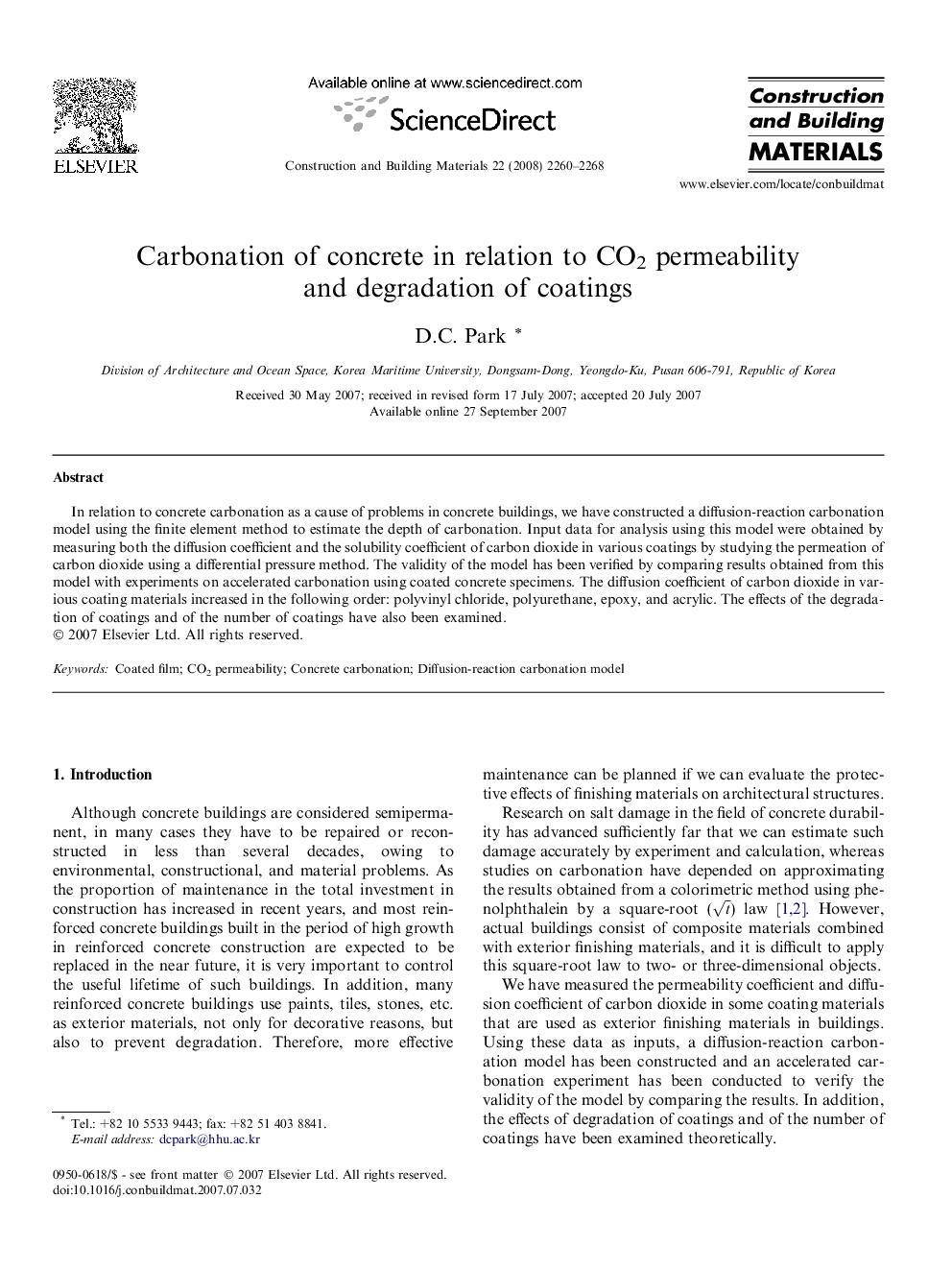| Article ID | Journal | Published Year | Pages | File Type |
|---|---|---|---|---|
| 261033 | Construction and Building Materials | 2008 | 9 Pages |
In relation to concrete carbonation as a cause of problems in concrete buildings, we have constructed a diffusion-reaction carbonation model using the finite element method to estimate the depth of carbonation. Input data for analysis using this model were obtained by measuring both the diffusion coefficient and the solubility coefficient of carbon dioxide in various coatings by studying the permeation of carbon dioxide using a differential pressure method. The validity of the model has been verified by comparing results obtained from this model with experiments on accelerated carbonation using coated concrete specimens. The diffusion coefficient of carbon dioxide in various coating materials increased in the following order: polyvinyl chloride, polyurethane, epoxy, and acrylic. The effects of the degradation of coatings and of the number of coatings have also been examined.
